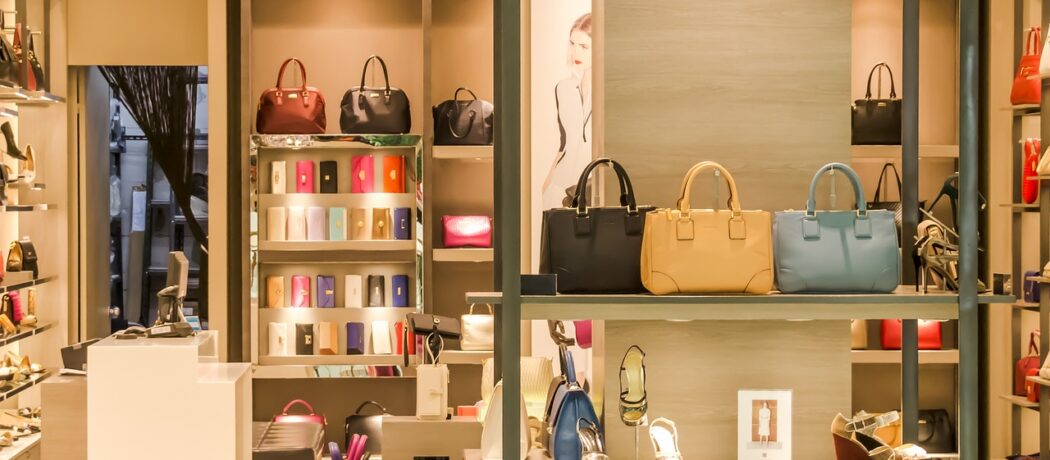Luxury and the second-hand market: serving ‘dreams’ and responsibility

Share
On Friday June 16, IÉSEG organizes the seventh edition of its Corporate Summer Day (Université d’été). As part of this event, Gwarlann DE KERVILER, Professor of Marketing, will lead a round table discussion* on luxury and the second-hand market, a sector that has been growing rapidly in recent years. Ahead of this event, she shares her thoughts on the development of this market and the key factors for luxury brands wishing to offer second-hand or rental products.
Can you explain why the luxury sector is interested in the second-hand and rental markets?
There are several reasons. First, I think that companies in the luxury sector are becoming more aware of their duty to set an example. When you’re a luxury brand, you’re watched and followed closely, so you also have a responsibility to be a role model in your product category. In addition, luxury brands sometimes face criticism, particularly concerning the use of rare and sophisticated material, that can serve consumption geared towards pleasure and excess. As a result, brands are looking for positive signals to demonstrate that they can make a positive contribution to society and the environment. Associating a luxury brand with the second-hand or rental market can therefore be a way of improving its image.
Consumers, especially the younger generation, are becoming increasingly aware of the impact of consumption on the environment. Customers are looking to adopt a more responsible approach to consumption. Turning to second-hand goods means extending the life of a product, rather than throwing it away and buying a new version. Choosing to rent, meanwhile, promotes the occasional use, by several people in succession, of the same product, rather than having several purchases. Luxury brands may seem particularly relevant to these two channels, as they offer durable products that don’t go out of fashion easily and are often reserved for special occasions.
Finally, these channels also enable these brands to reach a target (consumer) who wouldn’t necessarily dare enter a luxury goods store, or who is looking for more vintage or ‘collector’ products. Second-hand and rental channels also open new opportunities. As a result, there are many factors that ultimately explain the sector’s interest in second-hand and rental.
What are the key factors for brands wishing to offer second-hand or rental products?
It’s important to understand that consumers have already “forced the issue” by putting their own products on resale sites. This has raised the question of image for brands that are reselling online. Image is an essential element for consumers seeking to acquire products from a luxury brand. These brands are associated with experience and performance. Therefore, even when consumers are buying a second-hand product, they expect a quality product that is both beautiful and authentic. This means there is a need for mechanisms that enable them to verify product quality and origin. That’s why it’s so important for luxury brands to play an active role (in the development of this activity).
Then there’s the second big issue: price. Once again, consumers have set their own prices by reselling their brands, putting certain players in the sector in a difficult situation. Because, of course, we’re in a category where prices are generally high. What should be the price, for example, of a second-hand Chanel bag compared to one in the new in-store collection? Consumers have a perception of the price associated with a luxury product. So, there’s a risk of creating questions in the consumer’s mind (about price and value) if they find a second-hand bag at 50 euros that seems quite similar to a bag sold for 1,000 euros in a store.
A third factor seems to me to be very important when thinking about second-hand goods: the customer experience. When you sell luxury goods, you’re also selling a whole brand experience. As a result, brands need to be vigilant, especially when they use (online) sales platforms. How is the product presented on the website? How is it delivered? Is there a quality guarantee on delivery? What are the options for returning products? All this is very important if the second-hand channel is to remain a pleasant experience for the buyer.
Then, if we’re thinking about the rental channel, I think it’s also important to have a (specific) advisory service, because consumers are often looking to test, or to see if they can envisage themselves as consumers of the brand. So it’s important to guide them in their choices, to avoid imposter syndrome, and to ensure that they really feel they can choose a product that suits them. It’s also essential to educate the consumer about the product. The relationship with something you rent is not the same as with a product you own. Therefore, it’s going to be important to play the “you can test it” or “you can try it” card if it’s for a one-off event. In the end, it can also be a way of allowing the consumer to discover a new product.
However, I think that when you become a “buyer”, you need to have a real differentiation in terms of recognition, perhaps in terms of your relationship with the brand, and in terms of benefits.
Is it necessary to offer products through both channels (second-hand and rental)?
In both cases, the fact that we are talking about long-lasting, timeless quality products can also be a strength for luxury brands. For me, however, the 2 consumption models aren’t driven by the same factors in this sector.
Second-hand consumption is really about sustainability, about having access to products that no longer exist in current collections. Rental, on the other hand, is perhaps more about consumers who aren’t necessarily luxury consumers and are perhaps trying to see if it suits them. Therefore, I would tend to say that the second-hand channel is more natural, more obvious for luxury brands.
In any case, all products today are offered second-hand because consumers can decide to sell them. The rental channel is currently a little less structured and is not necessarily a ‘must’ for all brands.
So, even if these two channels (new and second-hand goods) are complementary – we need to differentiate second hand from the priority channel, which remains new products. We need to emphasize to customers that the moment they buy a product, they become customers of the brand. As a result, they will be treated as customers who have access to products in the store, and who will be more interested in owning new goods than in renting or buying second-hand.
What are the pitfalls to avoid for luxury brands?
To enhance the value of new products, brands can work on their collections, emphasizing creativity, renewal and the customer experience. Then, they can reinforce customer recognition by, for example, giving them access to priority benefits compared to second-hand or rental customers. Typically, many brands produce limited editions. I’m thinking, for example, of Guerlain, that made a limited edition of perfumes with the Maison Matisse, which was only offered to the best customers.
It’s very important to pay attention to price reductions on second-hand products, but also to the positioning of collections. I think it’s very important to make a distinction between new products and those sold second-hand, which can be used to develop the collector’s spirit and complement what’s sold in-store.
For me, there’s a point of vigilance when it comes to educating customers to make sure they understand the different offers (new, second-hand or rental). Why would I sometimes buy new products? Because I want to have access to a creative, new and differentiating product. Because I want to go back to the store…
Secondly, I would say that it’s essential that luxury brands can continue to evoke dreams, with limited editions that are not available for rental or second-hand. Therefore, I believe brands must not disperse themselves and remain focused on innovation and the production of new collections.
Even if these new channels offer many possibilities for brands, they must not forget their core business, expertise, and know-how. And for me, this is where the bulk of resources, efforts and investments should be made.
*More information on the Corporate Summer Day and Gwarlann de KERVILER’s round table: “Le luxe et la seconde main: le sens du collectif au service du rêve et de la responsabilité“. Please note the event will be held in French:




